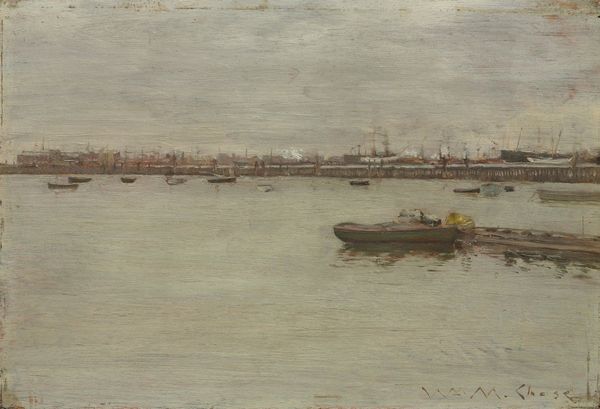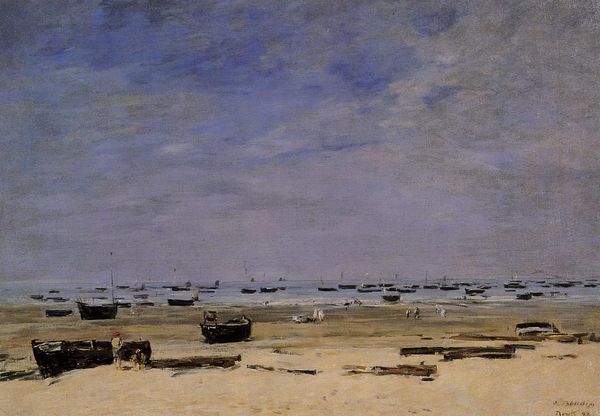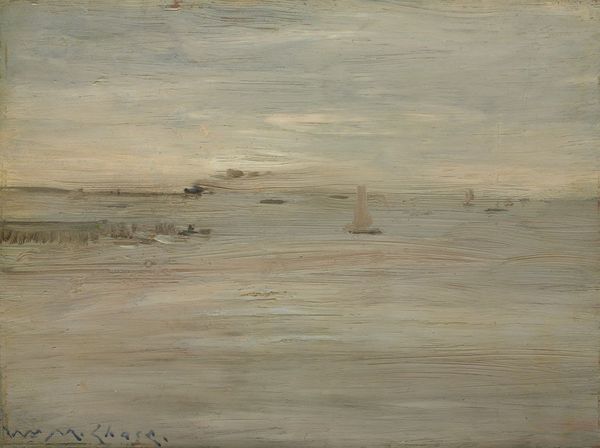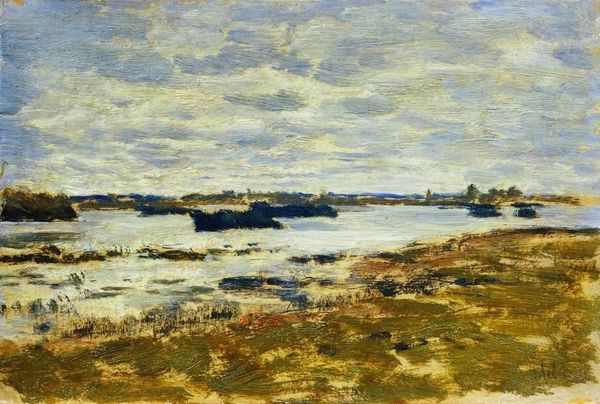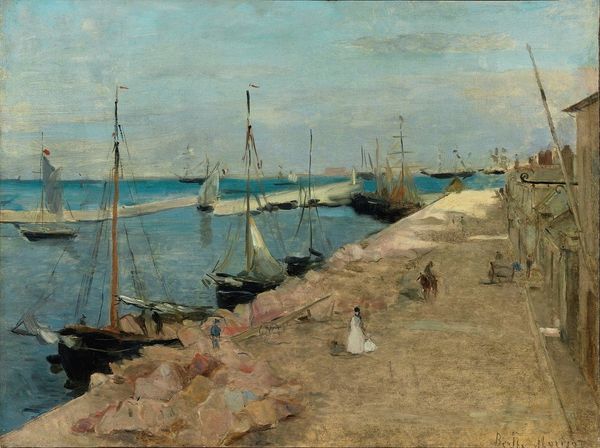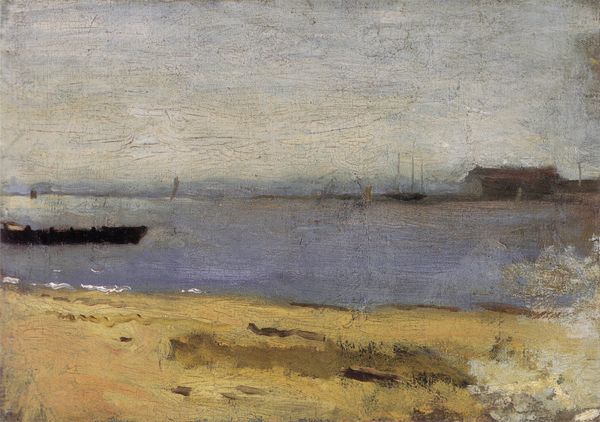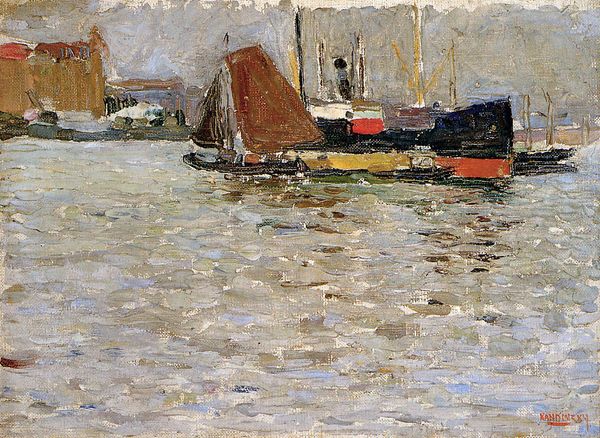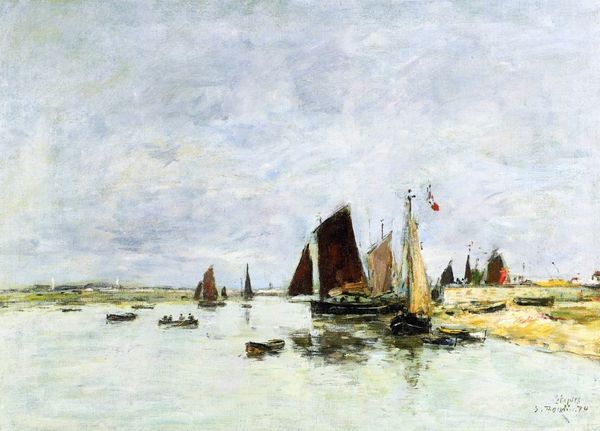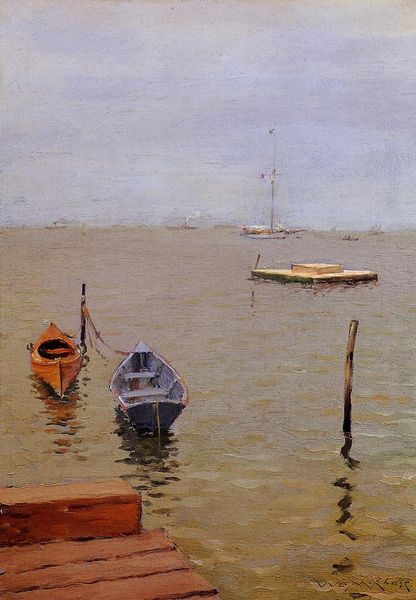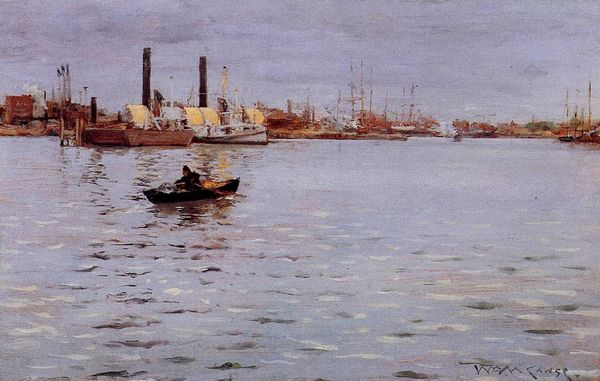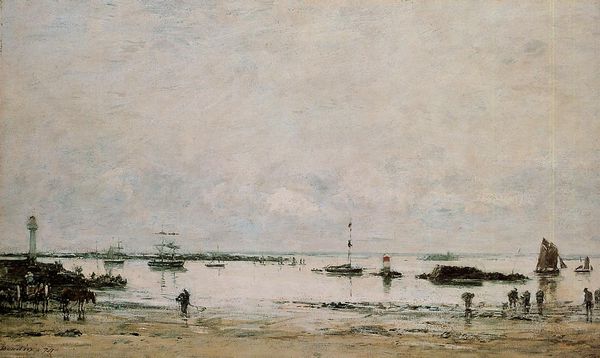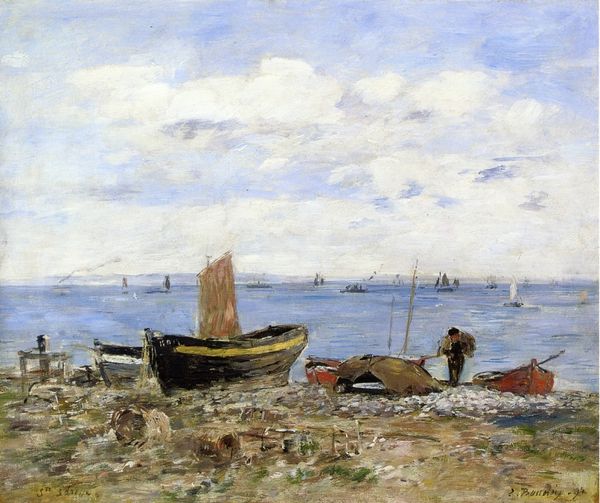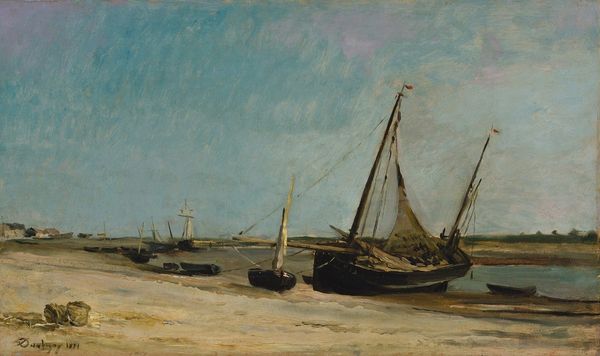
#
boat
#
abstract expressionism
#
sky
#
abstract painting
#
ship
#
impressionist landscape
#
possibly oil pastel
#
oil painting
#
ocean
#
neo expressionist
#
acrylic on canvas
#
street graffiti
#
paint stroke
#
water
#
watercolor
#
sea
Copyright: Public domain
Curator: William Merritt Chase's "Gowanus Bay," painted in 1888, captures a serene yet somber scene. What strikes you initially about this work? Editor: The overwhelming tranquility. It's a study in subdued tones, almost monochromatic. There's a tangible sense of stillness, of nature holding its breath. I'm curious how the artist approaches issues around industrial development and urban life. Curator: Chase’s technique employs short, broken brushstrokes, typical of the Impressionist style, focusing on the optical effects of light and atmosphere on the bay. The composition is carefully structured, leading the eye from the foreground, with its textured shoreline, through the expanse of water, to the hazy background where boats are gently anchored. Notice the use of color. Editor: Yes, the subdued palette heightens the work's reflective quality, almost like a faded photograph. Gowanus Bay, even then, was a burgeoning industrial area. I imagine it reflects not just a landscape, but perhaps the alienation felt as urban life shifts, and traditional forms of labor start giving way to manufacturing and more modern systems that pull away at our traditional senses of being? I’d be curious to compare it with contemporary urban landscapes. Curator: One could certainly read that tension into the work. The misty atmosphere obscures the industrial details that would have been present. What remains is an exploration of the sensory experience of a particular place and moment, less about making social statements and more focused on the aesthetic properties of form and light. Look at the gradations of color used to construct space, rather than through clear outlines and contours. Editor: The very act of aestheticizing this space raises questions. Is it romanticizing industry, perhaps subtly masking over the environmental realities and labor practices? Who were these scenes intended for, and what kind of cultural narratives were being shaped by their vision? Curator: Perhaps we both find something compelling here – your search for relevant and critical links between environment and society and my need to examine purely artistic intentions. It allows us to discover elements of a scene where a dock with moored boats serves both as structural elements in the composition, and indicators of cultural history, providing the aesthetic foundation of an artwork in conversation with sociopolitical themes. Editor: I agree. Looking closely, with different questions, only deepens the picture.
Comments
No comments
Be the first to comment and join the conversation on the ultimate creative platform.
